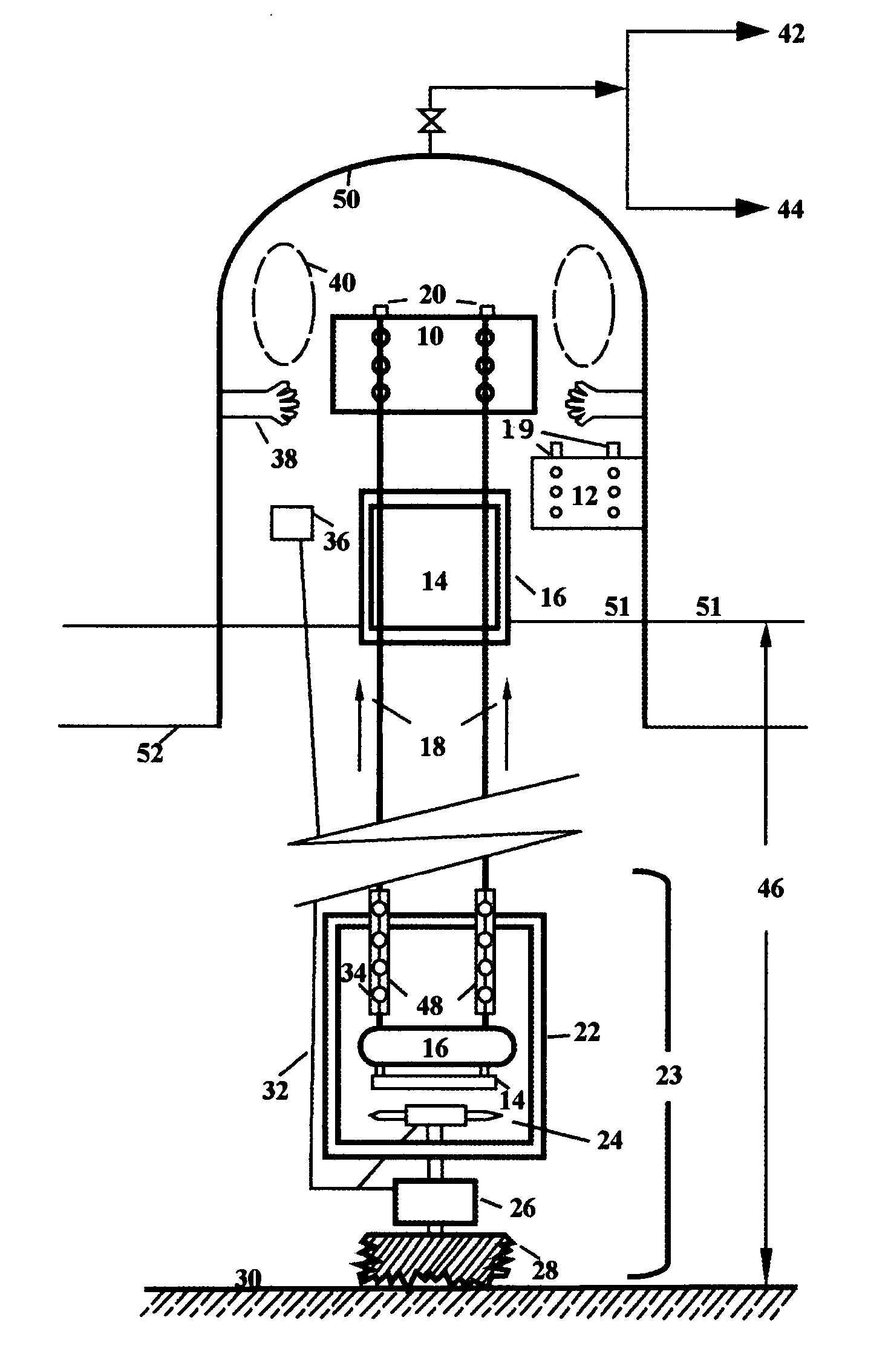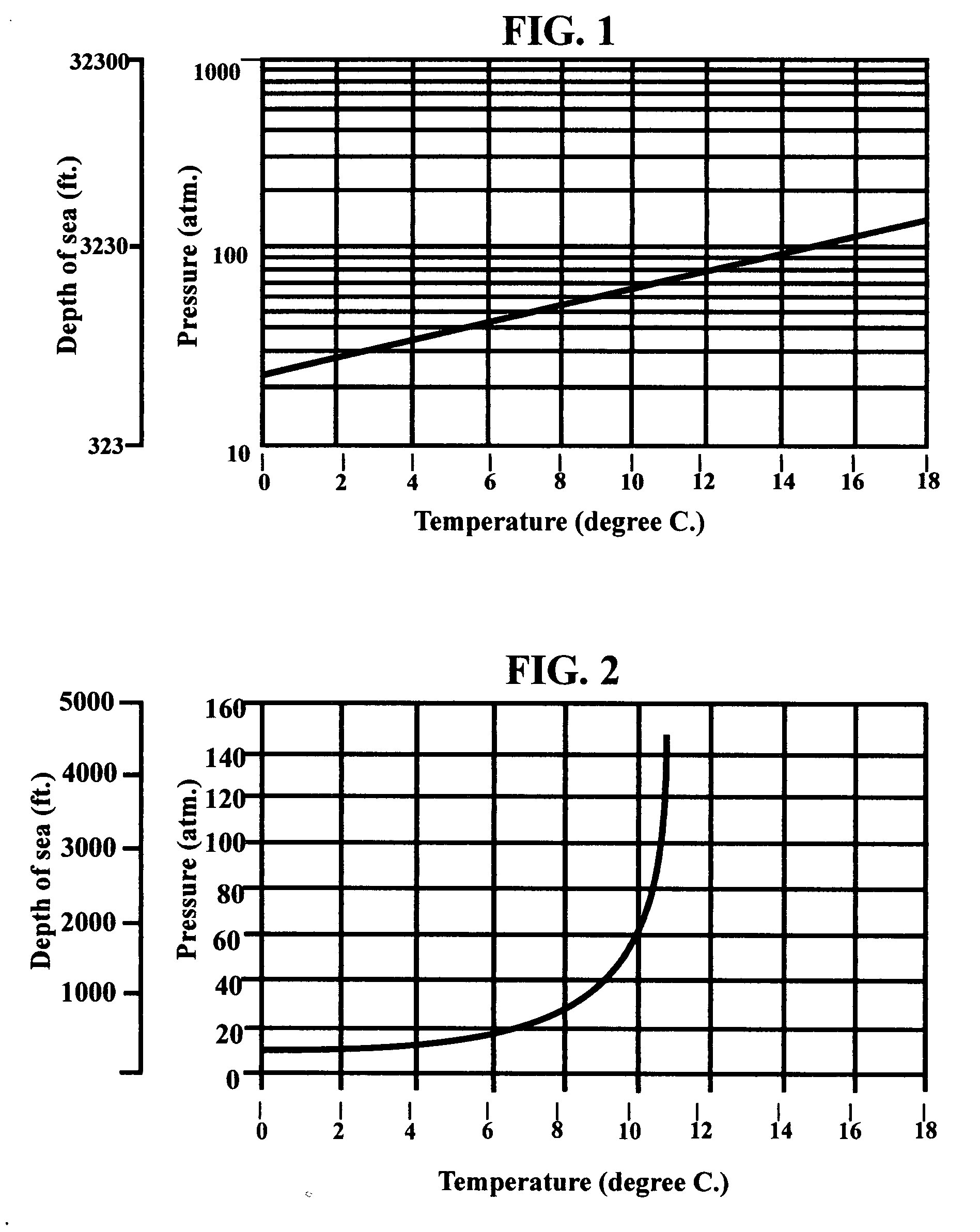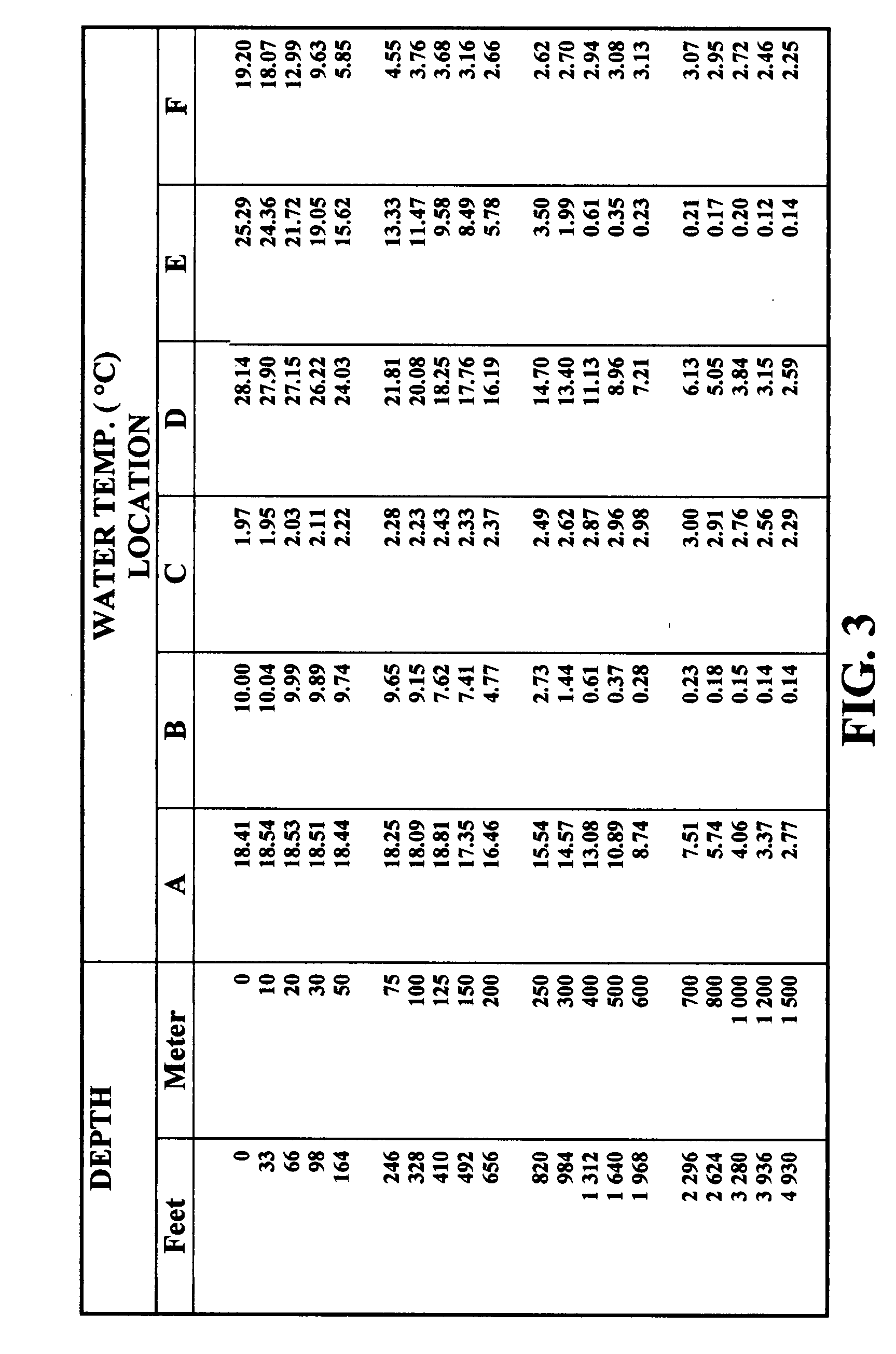Mining methane, sequestering carbon dioxide and farming in oceans
a technology of carbon dioxide and mining methane, which is applied in the field of mining methane, sequestering carbon dioxide and farming in the oceans, and can solve the problems of human beings, lack of cheap and convenient energy sources, and insufficient food for the poor
- Summary
- Abstract
- Description
- Claims
- Application Information
AI Technical Summary
Problems solved by technology
Method used
Image
Examples
Embodiment Construction
FIG. 4, FIG. 5A, FIG. 5B, FIG. 7A, FIG. 7B, FIG. 8A, FIG. 8B, FIG. 8C, FIG. 8D, FIG. 8E and FIG. 12
Preferred Embodiment for the Mining of Methane
[0089] A preferred embodiment of the methane mining installation of the present invention is illustrated in FIG. 4. The methane mining consists of a chain driving rotating drum 10, an auxiliary rotating drum 12, a pair of rotating chains 18, a methane mining assembly 23, a methane collecting dome 50, and a methane purification unit (not shown). The methane mining assembly 23 further includes of a grinder 28, a hanging frame 22, which is rested on a set of rollers 34, a motor 26 and a stirrer 24. During mining, grinder 28 is in touch with the methane hydrate formation 30. The power running the mining operation comes from the electrical cable 32. Along the whole length of the rotating chain 18, methane-hydrate-lifting buckets 16 are attached to it at equal distances. Each bucket holds one or several floats 14 to neutralize the weights of the...
PUM
 Login to View More
Login to View More Abstract
Description
Claims
Application Information
 Login to View More
Login to View More - R&D
- Intellectual Property
- Life Sciences
- Materials
- Tech Scout
- Unparalleled Data Quality
- Higher Quality Content
- 60% Fewer Hallucinations
Browse by: Latest US Patents, China's latest patents, Technical Efficacy Thesaurus, Application Domain, Technology Topic, Popular Technical Reports.
© 2025 PatSnap. All rights reserved.Legal|Privacy policy|Modern Slavery Act Transparency Statement|Sitemap|About US| Contact US: help@patsnap.com



